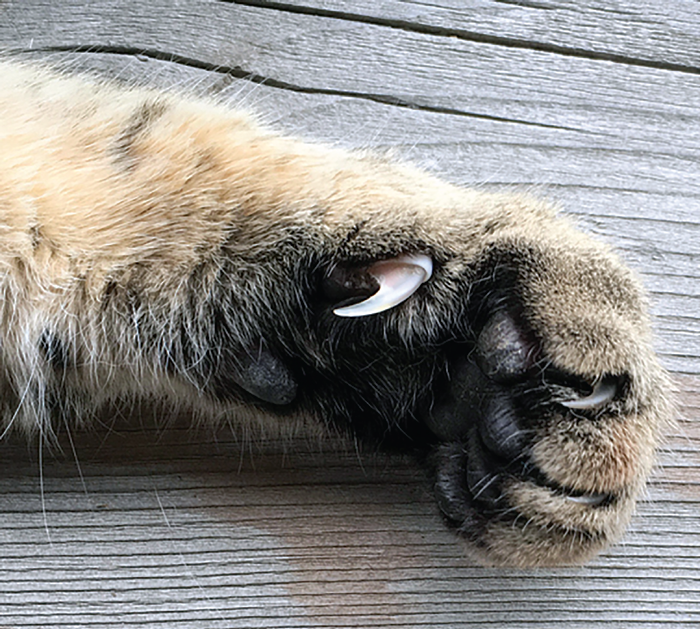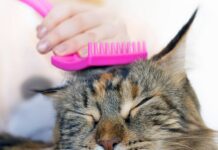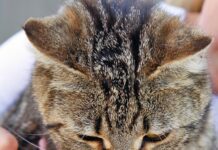Most active cats keep their nails worn down by walking and sharpening them on scratching posts (and possibly—but hopefully not—your furniture). Typical kittens and adult cats only need an occasional nail trim to tame extra-long claws, particularly the ones on dewclaws and extra toes that may not make contact with the ground or surfaces being scratched.
Trouble arises when a cat isn’t wearing her nails down naturally. Senior cats are at higher risk for developing ingrown claws, but any cat that is not getting much exercise could develop this issue.
Signs of Pain
- Signs that your cat might have an ingrown claw include:
- Limping
- Licking a paw a lot
- Nail visibly grown around and embedded in the pad
- Bleeding or oozing from the paw
When the nail first contacts the paw, the pad tissue will start beefing up the top layer with extra keratin for protection from the chronic pressure and irritation. This will look like a little callus, usually whitish in color. It will usually feel harder than the normal pads and may be flaky.
As the nail continues to grow, it will puncture the pad. At this point there may be some bleeding, along with swelling and discomfort. Ingrown claws get infected easily due to their close contact with the ground. An infected ingrown nail will usually be painful, swollen, and will likely ooze pus.
Senior cats sometimes have thick, brittle nails. Whereas normal cat nails taper to a sharp point, these nails stay thick from base to point and often shatter when they are trimmed. This is because the outer layers are not being shed normally and just keep building up. The result is a thick nail that looks more like it belongs on a dog’s paw than a cat’s. Cats with diabetes, hyperthyroidism, and arthritis (common in geriatric cats) are all more likely to develop these thick, overgrown nails. And if the cat isn’t active enough to wear off the old layers of nail, the nails will likely grow longer than they should, eventually growing into the pad.
If you notice that your cat’s nails are growing long enough to start curving toward the pad, make nail trims part of her routine care. Trimming every other week or so is usually sufficient to keep rogue nails trimmed back and your kitty’s pads safe.
When to Call the Veterinarian
If the ingrown claw has just started to contact with the paw, you can usually resolve the issue at home by trimming the nail. There will be a small callus around the contact point and perhaps a divot in the center. Gently wipe the area with a clean cloth.
Seek a veterinary exam if:
- The ingrown nail is bleeding
- The paw shows signs of infection, such as oozing, swelling, or feeling warm to the touch
- You are unable to trim her nails
- She is showing other signs of illness in addition to her nail woes
Once you know that your kitty has a tendency to let her nails overgrow, this is an easy problem to prevent. Simply trim her nails, especially the extra toes on polydactyl cats, on a regular basis to keep them short.




